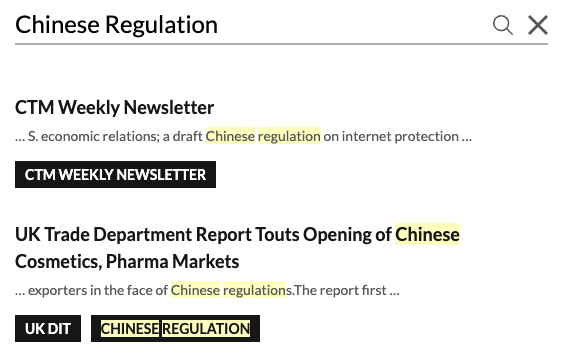China's Customs Tariff Commission of the State Council recently announced a series of tariff adjustments, including voluntary tariff reductions, tariff reductions under trade agreements, and in the meantime tariff hikes for some items.
According to the notice (link in Chinese), China will lower import tariffs on 954 commodities (link in Chinese), starting on January 1, 2022. According to the government (link in Chinese), some of the tariff cuts were designed to improve people's living standard and health. These commodities range from salmon and cod, cheese, fruit, and milk formula, to cancer drugs and artificial joints. Other products are related to promoting green and low-carbon development, such as gasoline engine particulate traps and automotive electronic throttles, and to upgrading the manufacturing industry, such as high-purity graphite accessories, high-voltage cables, and membrane electrode assembly and bipolar plate for fuel cells. Artworks and music instruments will also be subject to lower tariffs next year.
China also plans to lower MFN tariffs for 62 (link in Chinese) information technology products, effective on July 1, 2022, as part of its WTO commitments under the Expansion of Trade in Information Technology Products. These products include signal generators, magnetic heads, plasma display components for TV sets, radar and radio equipment parts.
In addition, China will lower tariffs as part of the implementation of trade agreements, according to the notice. For instance, it will apply lower tariffs for Cambodia and RCEP members that have ratified the pact, and further lower tariffs under the tariff commitments of existing treaties, including China's trade agreements with New Zealand, Peru, Costa Rica, Switzerland, Iceland, South Korea, Australia, Pakistan, Georgia Romania, Mauritius, as well as the Asia-Pacific Trade Agreement.
For the least developed countries, zero tariffs for up to 97% of tariff items (link in Chinese)will continue to be applied to 44 countries, including the Republic of Angola, East Timor and Myanmar. In a separate notice, the Commission stated (link in Chinese) that it will grant zero tariffs to more tariff items originating from the least developed countries. The effective date and applicable nations will be announced separately.
In the meantime, the Commission announced (link in Chinese) that within the range of the MFN bound tariff rate, it will raise import tariffs for some commodities next year. These products include lead-acid battery parts, gelatin, and pork. China previously lowered its tariff for pork, a popular protein in China, from 12% to 8% in 2020, after African swine fever outbreaks in 2019. With domestic pork production recovering and pork prices declining, China plans to raise the tariff rate back to 12%.
For exports, China will continue imposing export tariffs on 106 tariff items (link in Chinese), some of which are subject to zero provisional export tariffs. Compared to 2021, China will terminate lower provisional tariffs on items such as phosphorus and blister copper in 2022. Chinese media outlet China Daily stated that the the tax adjustment is designed to "push forward the upgrades and high-quality development of related industries."

